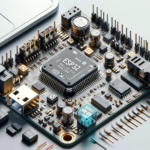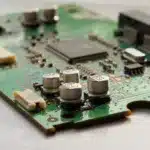
Introduction
In environments where machines operate continuously or in potentially hazardous conditions, an immediate visual feedback about the machines or systems’ status is essential. In such context, pilot lights are significant in indicating where the device is on, off, in standby mode, or experiencing a malfunction. Understanding the basics of these lights is crucial, providing visual cues that help users assess the device’s operational status and take appropriate actions. This comprehensive guide covers everything you need to know about pilot lights, including their functions, significance, types, colour codes, and versatile applications.
What Are Pilot Lights? Understanding Their Basics
Pilot lights, also called indicator lights, are small panel-mounted lights specifically designed to indicate the operating status of multiple electric and electronic devices, machines, and systems. These versatile switches provide a visual indication of whether the equipment is active, in standby mode, or experiencing any issues. A pilot light is often found on control panels, dashboards, and other equipment and comprises components such as lens, bulb, housing, and wiring that trigger their indication mechanism. Additionally, these signalling devices are colour-coded to indicate the different statuses of the devices.
A fundamental purpose of indicator light is to provide quick, visual feedback if a machine is powered on or off, alert individuals to potential malfunctions, and enhance safety and efficiency in various operation processes. For instance, in industrial machinery, a green pilot light might indicate that the system is functioning correctly. Similarly, a red light could signal an error, prompting timely maintenance or adjustments. In household appliances like ovens or heaters, these indicator lights ensure that users are aware when the appliances are on, reducing the risk of accidents.
The Significance of Pilot Lights: A Brief Look
The significance of a pilot light cannot be overstated. By offering a simple and effective means to monitor the status of multiple devices, indicator lights enhance user safety, facilitate troubleshooting, and contribute to energy efficiency. Moreover, these illuminating lights indicate system readiness and enhance usability and troubleshooting efficiency. In essence, indicator lights offer at-a-glance verification, help prevent operator errors and facilitate quicker responses to issues, thereby improving overall system reliability and maintenance.
Standard Types of Pilot Lights Explained: Finding the Right Choice
Pilot lights are classified into different forms based on their source of light, features, and colour variations. Each type is designed for specific applications where the most common types include:
LED Pilot Lights
LED pilot lights are the most popular type. They are highly efficient, have a longer lifespan, and provide brighter illumination compared to traditional incandescent or fluorescent lights. LED indicator lights consume less power, generate less heat, and are available in a range of colours.
Incandescent Pilot Lights
Incandescent signalling lights are the traditional type of indicator lights designed to emit a soft, warm glow. They are gradually being replaced by more efficient and durable LEDs.
Neon Pilot Lights
These lights are mainly used in high-voltage applications. They are highly visible and can handle voltages upwards of 120V or more. Neon lights are often found in older equipment and are suitable for heavy-duty industrial applications.
Push-to-Test Pilot Lights
These illumination lights test the status of the light by pushing a button. Push-to-test feature is particularly useful in safety-critical systems where constant monitoring of operational status is required.
Multi-Colour Pilot Lights
These indicator lights can display multiple colours from a single device. They are often used in sophisticated control systems where more detailed status reporting is required.
Common Colours of Pilot Lights and Their Meanings
Pilot lights come in varied colours, each with specific meanings depending on the industry standards and the application. Furthermore, some of the most common colours and their general meanings include:
- Red: A red light indicates danger or a fault condition of a device or system. It is often used to show that a machine is overheating, has encountered an error, or is in an emergency stop condition.
- Green: A green pilot light typically indicates normal operation or that a machine is running as expected.
- Yellow/Amber: The colour yellow or amber usually signifies caution or a transitional state, such as process about to begin or stop.
- Blue: Blue indicator lights are commonly used in HVAC systems or to indicate specific conditions in control systems. They may also signify cold conditions in temperature-sensitive environments.
- White: White colour generally shows that the system is powered on but not necessarily active in any process.
Typical Applications of Pilot Lights: Exploring Their Versatility
Pilot lights are used in a wide range of applications, including:
- Industrial Machinery – Indicator lights are widely used in factories and industrial plants to provide visual cues on the status of various machinery, such as motor controls, conveyors, pumps, and automated systems.
- Electrical Panels – In electrical distribution systems, these signalling lights serve as status indicators for circuit breakers, relays, and transformers. However, they help technicians quickly assess the condition of electrical panels and control systems.
- Consumer Electronics – Some household appliances, such as washing machines, microwave ovens, and coffee makers, feature small indicator lights that show whether the device is on, off, or in operation.
- HVAC Systems – HVAC systems incorporate these lights to indicate operating modes (heating, cooling, standby) or to show system faults.
- Automotive Dashboards – In automotive applications, indicator lights on the dashboard provide real-time status reports on various vehicle systems like engine performance, battery health, or brake status.
Final Thoughts
Pilot lights are pivotal components in the safety and functionality of many systems. They provide a simple, effective method to monitor the operational status of electrical devices. By leveraging this guide, users are equipped to monitor and maintain their appliances with a deeper understanding of indicator lights. They can ultimately enhance both performance and safety in their environments.





















